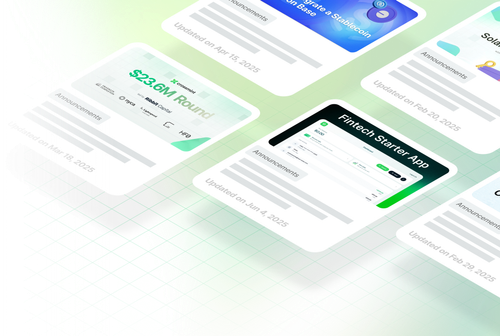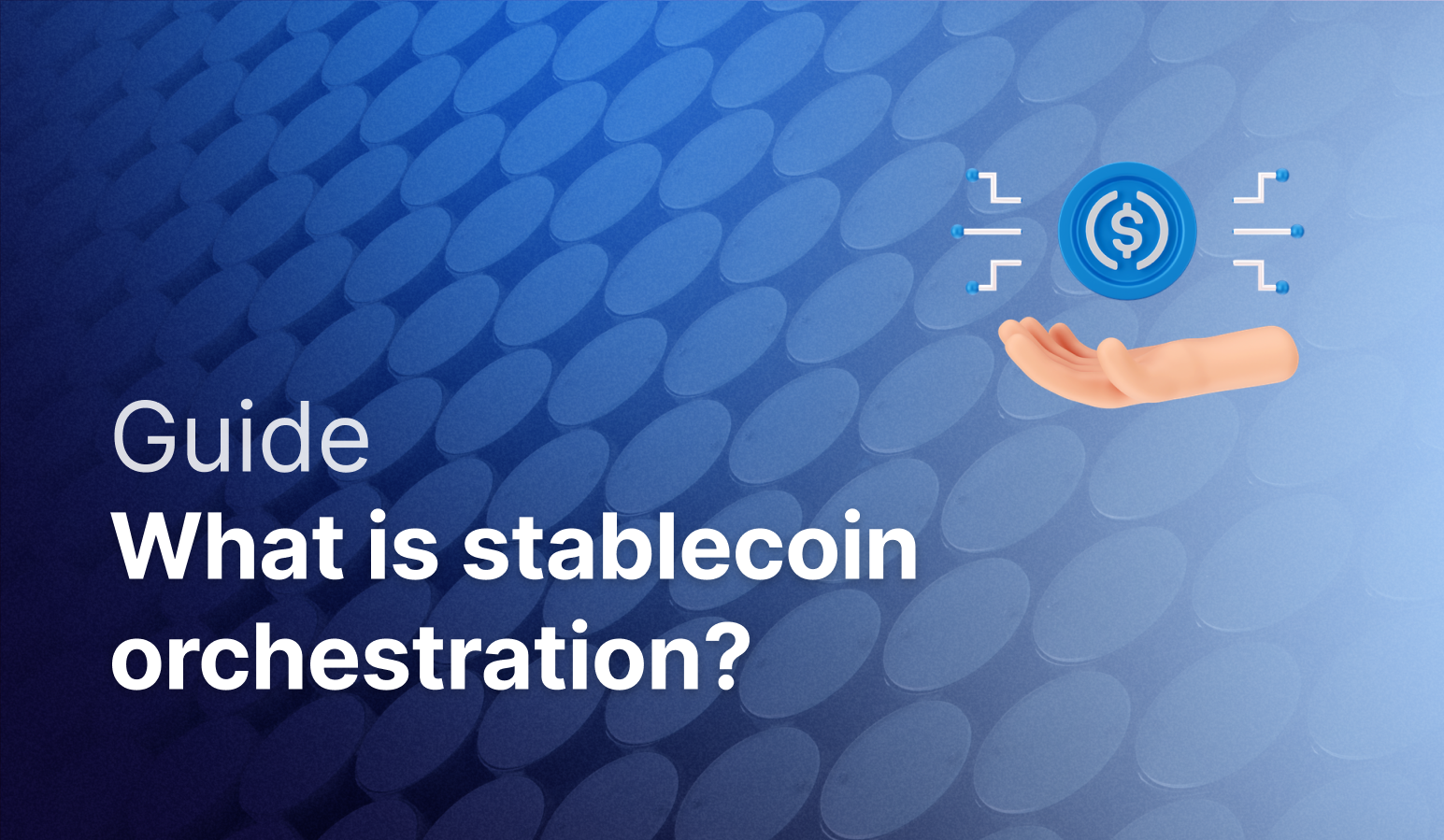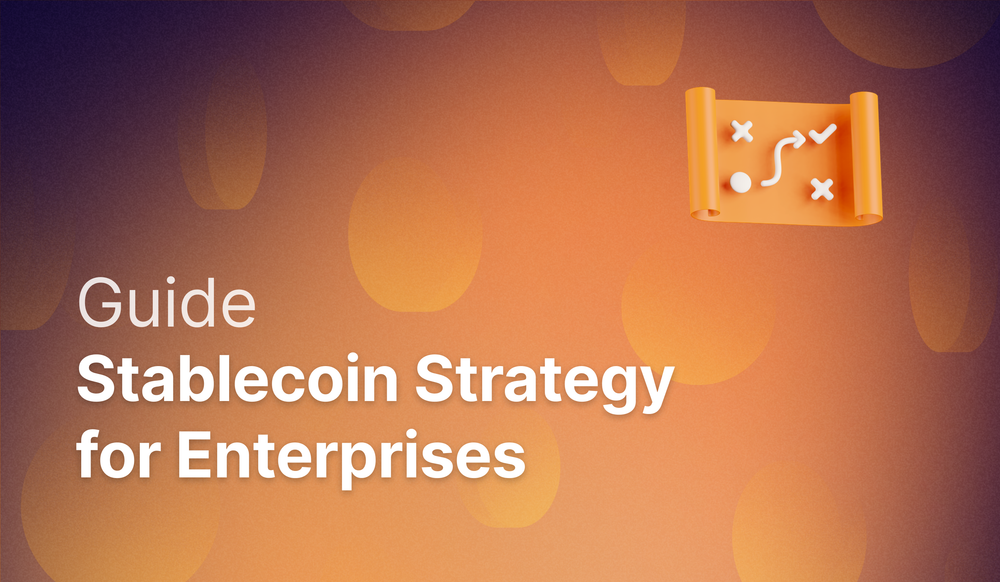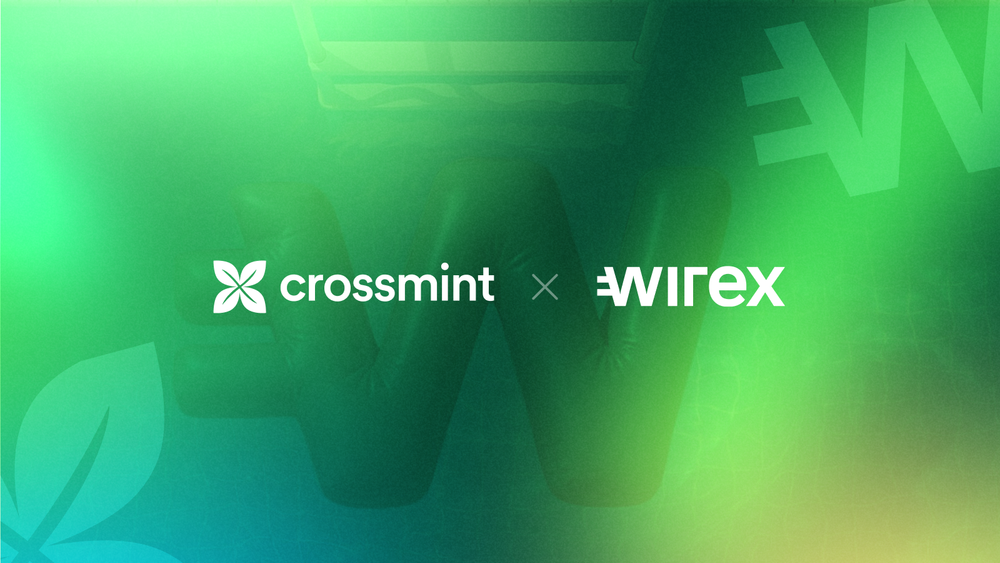Stablecoin orchestration is the infrastructure layer that coordinates stablecoin payments across blockchains, wallets, and business logic. While stablecoin adoption amongst remittances, global payroll companies, neobanks and other cross-border payments use cases accelerates, most quickly realize that accepting or sending stablecoins involves far more complexity than traditional payment rails.
Orchestration platforms abstract away this complexity, allowing fintechs and enterprises to integrate stablecoin payments without building blockchain infrastructure from scratch.
What does stablecoin orchestration actually do?
Stablecoin orchestration handles the technical and operational complexity that sits between "send USDC" and actually executing that transaction reliably at scale.
Wallet infrastructure includes custody models, private key management, and security architecture. Orchestration platforms provide the wallet layer without requiring you to build key management systems.
The abstraction layer manages gas fees, transaction monitoring, and blockchain complexity. Your users shouldn't need to understand blockchain concepts, and your support team shouldn't need to explain why a transaction failed.
Treasury and reconciliation tooling tracks balances across chains, monitors transaction history, and provides the data your finance team needs for accounting and reporting.
Compliance and reporting infrastructure varies by jurisdiction. Orchestration platforms often include built-in support for KYC/AML requirements, transaction reporting, and regulatory frameworks across different regions.
Do I need stablecoin orchestration or can I build this myself?
Building stablecoin infrastructure in-house means managing multiple vendors, hiring specialized blockchain engineers, and solving problems that orchestration platforms have already addressed. Here are some things to consider when deciding whether or not to build-in house or partner with a stablecoin orchestration provider:
Vendor consolidation with a stablecoin orchestration partner replaces the typical three to five vendors required for end-to-end stablecoin flows. Rather than integrating separate providers for wallets, custody, compliance, on-ramps, and bridging, orchestration platforms provide unified infrastructure that reduces integration complexity.
Developer-friendly APIs eliminate the need for blockchain expertise. Familiar REST APIs and SDKs mean your existing engineering team can integrate stablecoin functionality without hiring blockchain engineers.
Stablecoin orchestration platforms hide blockchain complexity for end users. Your customers shouldn't need to understand gas fees, seed phrases, or which blockchain their payment uses.
Compliance handled for you. Managing licensing requirements, AML screening, sanctions checks, and travel-rule compliance across jurisdictions requires dedicated legal and compliance resources. Orchestration platforms build these capabilities into their infrastructure.
The pattern repeats across the industry. Companies that build in-house eventually realize they're rebuilding solutions that orchestration providers already solved. The question isn't whether you can build it, but whether building undifferentiated infrastructure is the best use of your resources.
Ready to launch stablecoin payments?
Crossmint’s unified stablecoin orchestration platform with wallet infrastructure, payment APIs, and built-in compliance gets you onto stablecoin rails in weeks, not months. Our APIs require no blockchain expertise, and our engineers embed with your team to accelerate implementation.
Whether you're building global payouts, neobank infrastructure, or treasury operations, Crossmint gets you to market faster. Trusted by MoneyGram, Wirex, Toku and leading global fintechs.
Reach out to us here to learn how stablecoins can be your competitive advantage.







